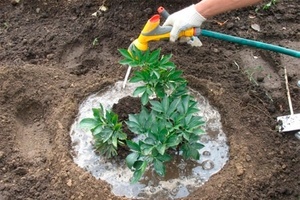 In almost every household plot, in the garden there are flower beds with perennial flowers. One of the most popular flowering bushes is peonies. Although their flowering is short-lived, during this period they will be able to leave incredible emotions with their owners. In order for the perennial bush to grow well, it is necessary to transplant peonies in the fall to another place, once every 3-5 seasons. Thus, it will be possible to maintain the plant in a healthy state.
In almost every household plot, in the garden there are flower beds with perennial flowers. One of the most popular flowering bushes is peonies. Although their flowering is short-lived, during this period they will be able to leave incredible emotions with their owners. In order for the perennial bush to grow well, it is necessary to transplant peonies in the fall to another place, once every 3-5 seasons. Thus, it will be possible to maintain the plant in a healthy state.
Content
What is a transplant for?
Peonies are beautiful plants that delight the eye and are able to easily grow and bloom in one place for more than half a century. However, with a constant presence in one place, they may have difficulties. The bush may stop flowering. In this case, you need to transplant the bush, in the most suitable soil. This should be done in the autumn.
[sc name = "info-dashed" text = "This is justified by the fact that a successful wintering of a plant depends on the state of its root system. If in the beginning of autumn, when the root system begins to accumulate in itself all the nutrients of the bush transplant, the likelihood that it will adapt to new conditions and begin to bloom in the spring is very high. In addition, it is easier for a plant to adapt in a new place in cool weather, and the plant that wintered at the place of transplantation is perfectly experiencing the summer heat. ”]
The bush will take place in a well-lit, protected from drafts place. With a lack of lighting, it can stop blooming. A flower loves the sun, but it hates overheating. So the best place for bushes is away from fences and other objects that can give their peonies their heat. If a gardener wants to transplant a bush into the soil that is constantly moist, due to the close location of water sources, he will not only not wait for the flower, but will also see how the peony rots.
Therefore, if it so happened that the landing site is distinguished by the presence of groundwater, it is best to make a high bed - so the roots of the plant will not get to a destructive level.
Bush preparation
Before you dig a flower, you need to make sure that the place for planting is prepared. A pit is dug quite large to put prepared soil mixed with humus or bought in a store.
- Dig the bush carefully so as not to damage the roots much.
- Do not touch the root system, that is, do not destroy the earthen lump formed around it.
- If you could not save the com, delete all the old and damaged roots.
- Trim the green stems, leaving about 10 - 15 centimeters from the root zone. That is, only sticks without leaves should stick out.
Having completed all the steps, you can begin landing. There are no specific regulations or restrictions. You can act in the way you like. The bush is perfectly adapted to any growing conditions. Natural and climatic conditions do not affect its flowering and other vital processes. Of course, do not forget that the decorative options for a perennial flower are more whimsical than simple ones.
How is the transplant performed?
 It is recommended to start digging holes for peony transplants in the fall in the summer. Their diameter should be approximately eighty centimeters, a depth of seventy. If you need to transplant several bushes nearby, the pit should be done at a distance from each other more than a meter.
It is recommended to start digging holes for peony transplants in the fall in the summer. Their diameter should be approximately eighty centimeters, a depth of seventy. If you need to transplant several bushes nearby, the pit should be done at a distance from each other more than a meter.
In the finished pit, it is necessary to lay the drainage.More than half of the pit (approximately two-thirds) must be filled with a soil mixture consisting of garden soil, humus and sand. It is necessary to fertilize the earth a little and mix it with drainage, and then water it.
Before transplanting to another place, the prepared land should be compacted. Before and after planting, you must carefully monitor the acidity of the soil. In the Kuban region, peonies are transplanted in the fall to another place in the same way as in other regions, you can watch the video of professional gardeners and see for yourself. Almost all flowers are unpretentious, especially if they are perennial.
- For transplanting peonies, it is necessary to cut their stems almost to the ground.
- After the plant, you need to carefully dig it out - it is recommended to carefully dig it up from below, making a long trench.
- In order not to damage the root system of the plant, undermining should be done by stepping back from the extreme stems of the order of thirty centimeters.
- For maximum convenience, it is recommended to get the cropped peony with a pitchfork. Do not pull the plant from the ground by the stems - this can damage its roots and buds, which are at its base and begin to develop for many years to come.
Having taken the bush out of the ground, it is necessary to free its roots from the excess earth with a shovel. Next, the peony must be put in a shady place for a couple of hours - during this time its roots will cease to be too brittle - and this is very important when transplanting.




Since the peony has an extensive rhizome with many stems, the gardener can choose the one suitable for planting. You need to choose young ones (they are painted in light, sometimes white) with a pair of shoots and several buds located on the roots. Selected parts must be carefully trimmed with a knife. Places, faults and sections should immediately be treated with wood ash or a potassium permanganate solution.
The pit is filled with garden soil, well compacted and watered abundantly (however, it is important to ensure that the roots of the peony are not flooded).
Video:
Care Features
In order for the peony to grow rapidly, it is important to ensure that the kidneys are covered with earth at least five centimeters. If the peony is on heavy soil, then the layer of earth should be no more than four centimeters. This should be monitored throughout the life of the plant - its successful wintering and plentiful flowering depend on this.
The transplanted plant should be watered regularly, in an amount that will give the peony a sufficient amount of nutrients, but will not destroy its root system. It is important to protect the basal part of the bush from frost. In this case, mulch is perfect.
Since the plants buried in the ground are below the young roots, it is recommended to feed and fertilize the plant - best of all with watering.
Immediately after transplanting peonies in the fall to another place, it is recommended to start preparing the plant for winter. Toward the end of October, all shoots need to be cut to the root and carefully loosen the soil, after watering it well. Since autumn is a rather rainy season, there is no need to water the plant. If the street is warm, dry weather, the plant still needs watering.
Bush pruning in spring
In the first spring of a peony in a new place, it is recommended to cut off all the flowers - the bush has not yet matured in a new place, if you get rid of all the buds, all the nutrients received by the plant will go to the formation and development of the roots, so that next year the flowering will last longer, and the buds will be larger.
 Undoubtedly, a peony is a very moody plant, which is why, once in a new place, it may refuse to bloom. In order to cope with this problem and again begin to admire the indescribable beauty of a flower, it is necessary to find the source of such behavior.
Undoubtedly, a peony is a very moody plant, which is why, once in a new place, it may refuse to bloom. In order to cope with this problem and again begin to admire the indescribable beauty of a flower, it is necessary to find the source of such behavior.
As mentioned above, the peony bush is very demanding on lighting. If the gardener is not completely sure whether the flower will be comfortable in the new place, it is better not to risk it.
The first year in a new place is the most difficult for a flower. That is why, in order to help the flower settle and grow faster, it is recommended to fertilize the plant abundantly. It is not necessary to buy expensive products - regular manure is also suitable (it needs to be watered with a rotted solution).
One of the most common causes of peony failure to bloom is an incorrect planting level. If the plant is buried too much in the ground, it is worth digging it up and planting it correctly, with the opposite problem, earthing will help.
Supply with mineral components and fertilizers
 Lack of food is the most obvious reason for the lack of flowering of the flower. In the first year, when the root system of the plant has not yet grown stronger, and the peony itself has not had time to adapt to a new place, it is important to give it a sufficient amount of fertilizing - with its help the plant will quickly get used to a new place, grow roots and adapt.
Lack of food is the most obvious reason for the lack of flowering of the flower. In the first year, when the root system of the plant has not yet grown stronger, and the peony itself has not had time to adapt to a new place, it is important to give it a sufficient amount of fertilizing - with its help the plant will quickly get used to a new place, grow roots and adapt.
The timing of transplanting peonies in the fall to another place is also important.
Caring for any plant is based on the use of high-quality mineral fertilizers and humus. That is, you need to be able to create the right set of components that can really help peonies. Humus is laid during planting at a shallow depth, or mixed with soil. Mineral fertilizers are applied already in spring or summer, depending on the condition of the flower.
Incorrect and untimely pruning of leaves can also cause the peony to not show off with its buds. When cutting buds (it doesn’t matter how many years the plant has been growing in one place), it is absolutely impossible to cut leaves from the stem. In the first year of flowering, it is possible to leave the bush without all the buds; in subsequent years, it is recommended to prune no more than a third. The leaf part of the plant is not recommended to be cut before the first frosts.
Pest protection
 Regardless of how long a peony has been growing in one place for a long time, it is important to ensure that it is not susceptible to attack by diseases and parasites. The first transplanted plants should be monitored especially carefully for the first year, although the peony is little susceptible to various infections.
Regardless of how long a peony has been growing in one place for a long time, it is important to ensure that it is not susceptible to attack by diseases and parasites. The first transplanted plants should be monitored especially carefully for the first year, although the peony is little susceptible to various infections.
One of the common diseases of peony is rust. Small bugs attack peony buds, sucking juice from them, thereby depriving the gardener of flowering.
These bugs must be collected and discarded from the plant every day, and the leaves and shoots themselves should be sprayed with specially prepared liquid (for example, one percent Bordeaux). It is recommended to do this in the spring, before the buds have formed - this will reduce the chance that the parasites attack the flower. It is repeated every ten days.
In late autumn, during the beginning of frosts, the stems of peonies need to be cut to the ground, remove the stems and water the soil abundantly. Transplanting roses to another place in the fall in the suburbs does not differ from other regions. Follow clearly the recommendations and you can achieve maximum performance.
If a peony is already many years old, and it seems hopeless - do not despair. You can correct the situation by changing it in the fall to a new place. After it, the probability that the plant will bloom again is very high.

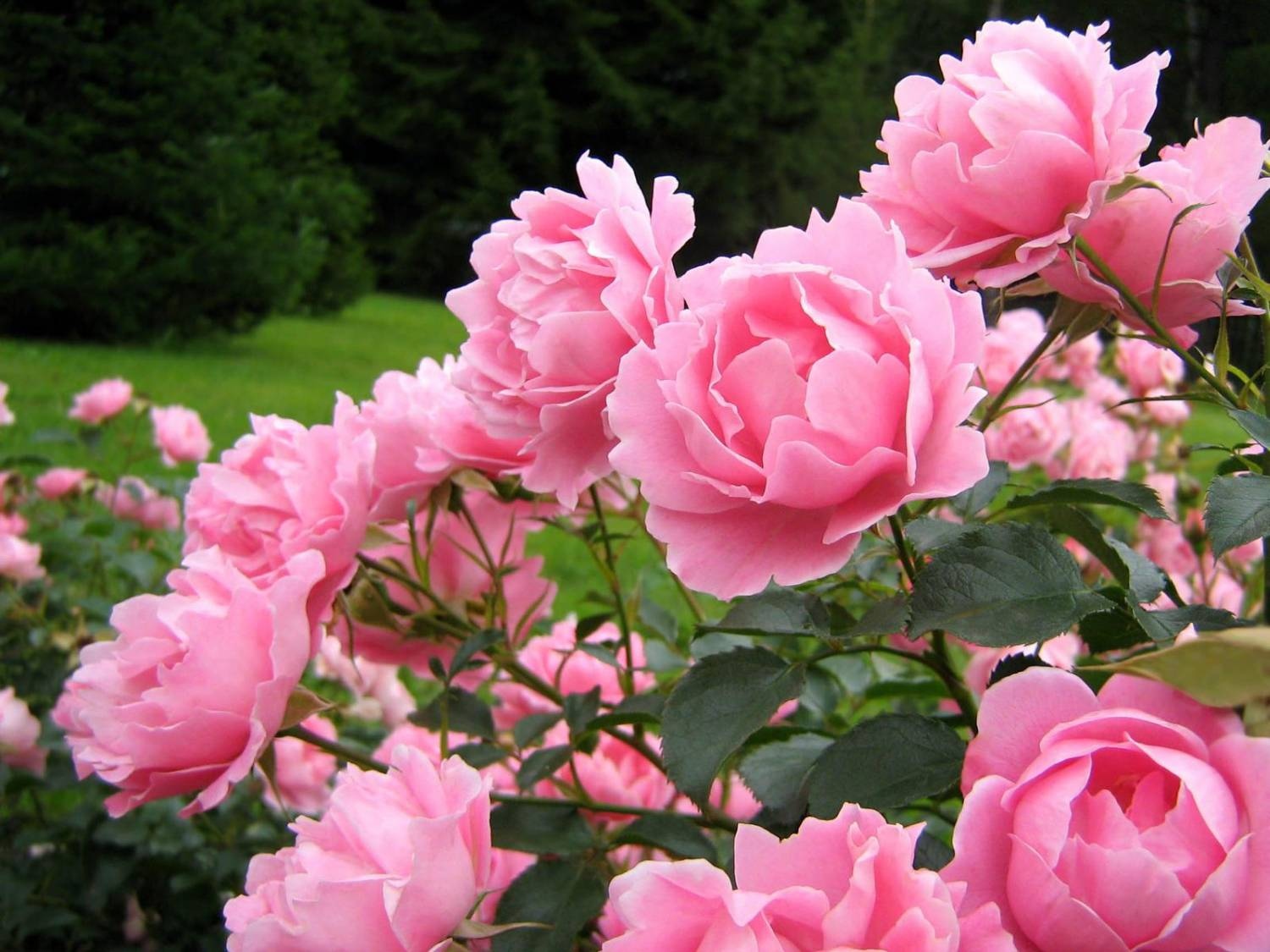
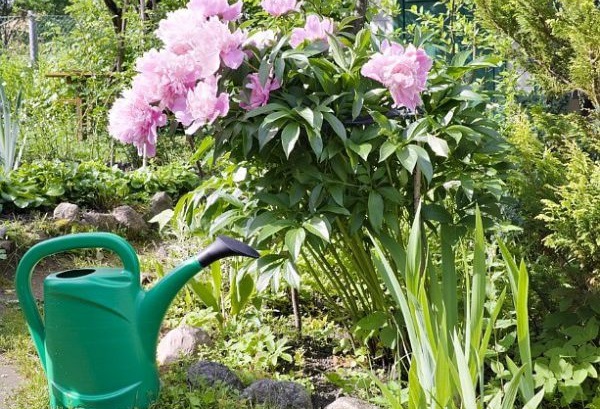
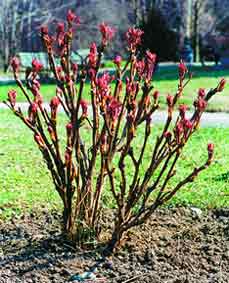 Pruning peonies in the suburbs for the winter
Pruning peonies in the suburbs for the winter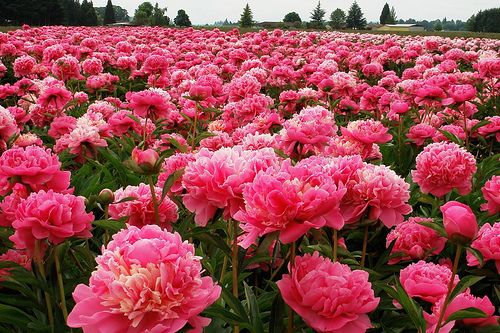 How to transplant peonies so that they bloom next year
How to transplant peonies so that they bloom next year How to transplant peonies in the fall to a new place
How to transplant peonies in the fall to a new place
Alexets
Very good useful information. I immediately went to the garden to transplant peonies. But I have three different colors. I wanted to plant them together in a circle of 15-20 cm. Now I will plant them after 80 cm along the line in the flower bed. Thank you for the video, which is pretty and understandable!
Alexey
Correctly Alexey, not Alexets himself, was mistaken.